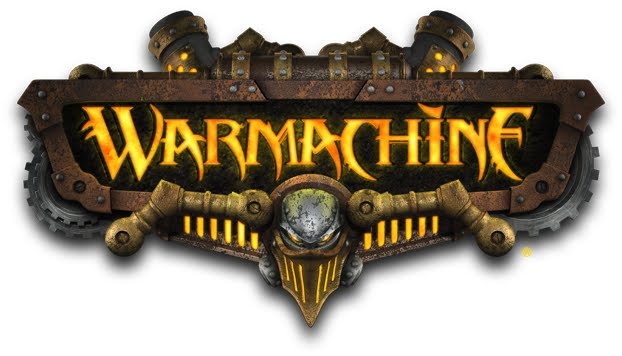Warmachine: Listbuilding 301- Expect the Unexpected

We’ve talked about building balanced lists a number of times. Relasine talked about it in his Listbuilding 101 and 201 articles, and I know I’ve discussed it as well, but we’ve never compiled it all into one post. It’s time to change that.
When I build a list, I’m always mentally trying to make sure it has some means of taking on a variety of potential threats and situations. I’m assuming you’re building balanced take-all-comers lists, either one-off lists for casual play, or 2 lists for a Steamroller tournament format. If you’re tailoring your lists for specific opponents, then most of this goes out the window since you’ll probably include all the counters you’ll need for the opposing force. Just remember, in Warmachine, everything has its counter, and relying on any one or threat ability to win your games is asking for failure in the long run. Having counters for most or all of the threats I list below will give you a reasonable means of countering those one-trick pony forces.
Expect the Unexpected
Whatever list or faction you play, any reasonably balanced list will need some means of dealing with the following army buildouts:
- Massed infantry. Most people might think of a mob of Zealots or Mechanithralls, but every faction can do this. I’ve seen 35pt Troll lists with 40+ models on the field, all of them with Tough, and many of them with high ARM and multiple wounds. Having volume attacks in the POW 10-12 range are a good option. With my Legion lists, I’m able to use Striders, Deathstalkers, Seraphs, AOE’s, and Archers to solve this type of problem. Other armies may go for massed AOE’s, numerous models of their own, lots of shots, or more elite models with high volume numbers of attacks.
- Multiple heavy Warjacks or Warbeasts. What will you do when you see Karchev and four of his ARM 20 friends bearing down on you in a 35pt game? Having your own heavies is one way. Weaponmaster attacks in the P+S 9-12 range is another. Medium-based infantry is a third, since they can tie up the opposing heavies without risk of being trampled while the rest of your army goes in for the assassination.
- High DEF & high ARM. I’m talking DEF 15+ and ARM 18+. Units with the right buffs can often have both. Think about Swordknights in defensive line with Arcane Shield on them. A Cygnar player can pay 6 points for 10 guys who can all have ARM 19. Or an Iron Fang Pikemen unit in Shield Wall with Iron Flesh. That’s potentially 12 guys with DEF 16 and ARM 18. Ugh! Fortunately, most lists can only buff up 1 model/unit to such high levels, so one very simple counter can simply be to tie up that “super unit” with cheap bodies (like a 4/6 costed unit of your own) until you’ve dealt with the rest of the army. Another counter I don’t see as much by newer players is having some way to remove or ignore spell buffs. Think about it. Most of the “super units” rely on an upkeep spell to reach such high stats. Epic Eyriss, a Thrullg, the Purification spell, and other abilities which can remove or ignore the buffs can bring those models back down into the easily killable range. Consider having some means of doing that in at least one of your two tournament lists.
- Stealth models & units. Most factions can field one or more stealth models/units in a list, and they range the gamut from ranged infantry, to solos, to heavy Warjacks. You’ll need a way to handle them. AOE’s are often one good option, considering most Stealthed models also have low ARM, but there are others. Check out this article for more ideas.
- Incorporeal models/units. This one is less common than the others, and normally seen in Cryx lists, but it’s still something to consider. Pretty much every caster in the game has magical weapons and at least one offensive spell. Fitting in a unit with magical weapons into at least one list isn’t a bad idea either….
- Some way to deal with objectives and control zones. This is either by being able to at least deny them to your opponent while you for the assassination, or by having a list built almost completely around taking and holding a spot and winning via scenario.
- Some means of assassinating the enemy caster. Assassination methods can range from Arcing spells, to obscenely long charges, to shooting, to waiting until you’ve finished off their army before going in for the final kill. You’ll need either a good volume of POW 12-14 attacks, or normally just a few high POW/P+S attacks (say from a heavy). Also make sure the units your relying on to do those attacks can deal with the normally higher DEF and ARM of a caster, either on their own, or with support, say from buffs or a Feat.
- Multiwound infantry. What will you do when you face a Khador Man-of-War force with multiple units of 8-wound heavy infantry? Legion, Circle, Skorne, Trolls….heck, basically every faction except Cygnar, Retribution, and Mercenaries can easily field multiple multi-wound infantry units. Whereas your basic POW 10 ranged shots can deal with most normal infantry models, multi-wound infantry will often absorb the damage without batting an eyelash. What you can do is either shoot them with lots of low POW shots, several higher POW shots in the 12-15 range, or out-charge them. Most multi-wound infantry are only SPD 4 or 5, but most also have Reach. giving them a threat range of 9″-10″. If you’ve got something faster, you can get the jump on them. Just make sure your faster unit has the hitting power to take them out with just 1-2 hits. Normally you’ll only get 2, or at most 3 models in melee against any one medium based model.
Conclusions
Those are the things I think about when I build my lists, and I try to make sure a list can handle every one of those situations. Having 2 lists in a steamroller format makes things easier, since you can use the second list to cover some of the weaknesses of the first. If your faction or caster has very obvious and specific weaknesses, then make sure to have some means of compensating for them. Most tournaments are won by players who’se lists can handle the unexpected, and the larger the tournament, the more likely you’ll run into all the various threats I discussed.






